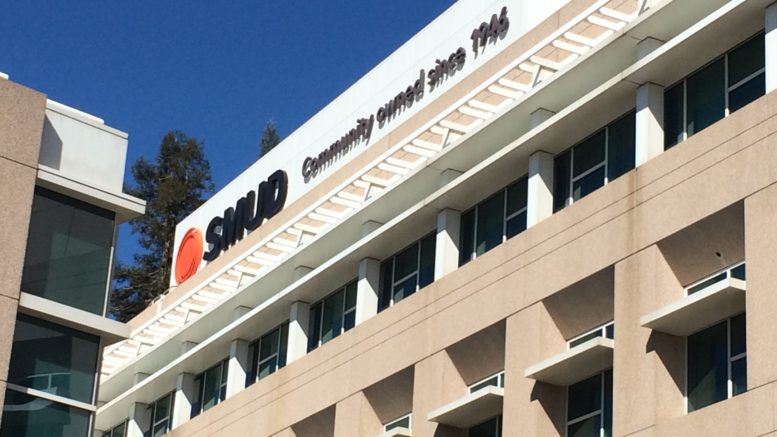By Foon Rhee
First off, it’s far better to get your power from SMUD than PG&E, especially these days.
The Sacramento Municipal Utility District charges lower rates and is generally well managed. And it hasn’t put residents in danger, unlike Pacific Gas & Electric, which recently declared bankruptcy due to all the lawsuits from deadly wildfires it caused.
Still, that does not mean that SMUD is perfect, or that its customers are completely off the hook.
Indeed, the SMUD board is starting toward another round of potential rate hikes—4.75 percent in 2020 and another 4.5 percent in 2021, according to the general manager’s report released on March 21.
For more than 557,000 residential customers, the average monthly bill of $114 would rise by $5.40 in both 2020 and 2021. There was a 1.5 percent rate increase for residential accounts in 2018.
SMUD says that the higher rates are needed to increase reliability and safety and comply with regulations, and that it reduced the proposed hike from 6.5 percent by cutting operational costs by $28 million a year.
Then, there’s a “fixed charge” of $20.30 a month, which covers costs for billing, call centers, meters, poles, transformers and other equipment. While most municipal utilities have such a charge as well, as of last year, SMUD’s was third highest in a list of 21 it provided. SMUD isn’t proposing an increase in that charge for residential customers.
But for 56,000 small businesses, the charge would rise to $25 in 2022 and $33 in 2028. They and other commercial accounts are also facing potential rate increases. For small businesses, with an average monthly bill of $167, the increases would be $7.90 in both 2020 and 2021.
SMUD’s official policy is that its rates will be 18 percent below PG&E’s. At the end of 2018, SMUD says its average rates were at least 26 percent lower than PG&E’s and among the lowest in California.
Even though it’s a public utility, not as profit-driven as investor-owned utilities, SMUD is facing many of the same pressures driving up costs: the increasing threat of wildfires, the need to upgrade technology, the priority to reduce carbon emissions and rising labor costs, including pensions.
SMUD forecasts the need for 4 percent to 4.5 percent annual rate hikes for the next decade. Lower increases would mean higher hikes in the future or cuts in programs and services, the staff says. At the same time, SMUD is encouraging energy efficiency by selling smart thermostats and offering rebates for energy-efficient appliances. In late 2018, it put in place a “time of day” rate as the standard, with higher prices between 5 p.m. and 8 p.m. when power usage is highest.
The SMUD board is planning public workshops April 23 and May 9 before releasing a rate plan for a public hearing on June 4. A vote is scheduled for June 24. Any rate hikes would go into effect January 1.
So it’s time to speak up, if you want. But just remember: It could be worse, a lot worse.






Good article on SMUD but their planned fees on roof top solar needs to be pointed out. Their proposed monthly fee of $16 for a typical roof top system spells the end of residential solar and seems counter to California goals.
Good article on SMUD but it ignores the fact that the fixed charge is regressive in that it overcharges the poor and low energy users and discourages conservation and is opposed by sierra club, NRDC, consumers union, etc. Customers pay no fixed charge to pge. SMUD is also proposing a monthly fee of $16 for typical rooftop solar that will spell the end of residential solar. Too bad the so called green city of Sacramento has an antiquated electric rate system.
Good article about SMUD, unfortunately it did not mention all of the community service activities and financial support that SMUD makes to the community it serves. Through their SMUD cares program last year SMUD and it’s employees contributed $470,000, 14,508 community service hours and $57,955 in scholarships for college students. Additionally SMUD has a mature PAID high school and college internship program and consistently looks for opportunities to support the community it serves in many different ways.
Yes, the cost of running a utility is increasing,and yes, SMUD as well as every other electricity utility has to increase and change it’s rate structure to more fairly distribute these rising costs, but SMUD always focuses on trying to best support and serve it’s customers as the number one priority. I do not agree with the statements Tom is making, especially overcharging the poor (SMUD has a low income support program called EAPR) but I leave it to the reader to validate his statements as well as mine. I for one am very thankful and appreciative that I receive my electricity from SMUD and not PG&E or any other electricity providers.